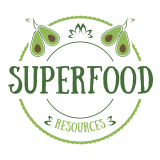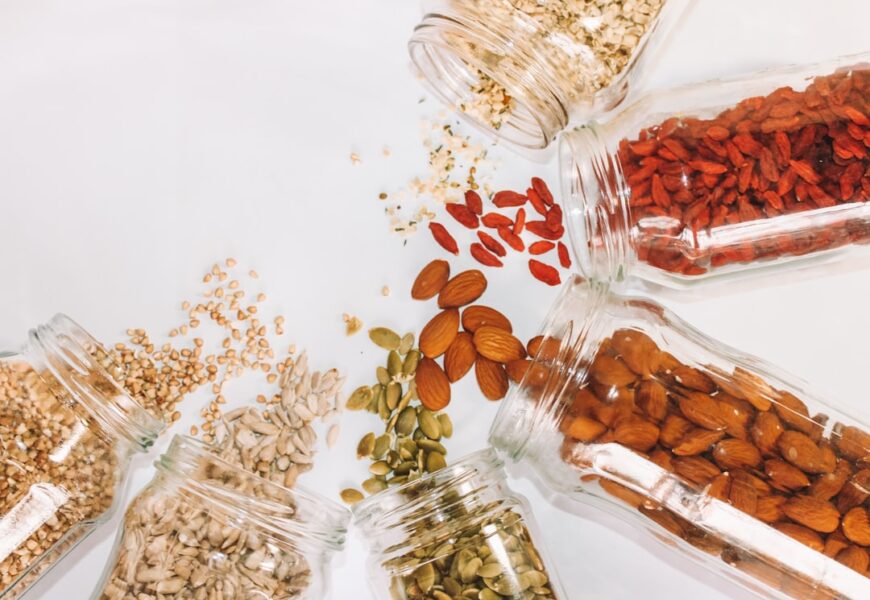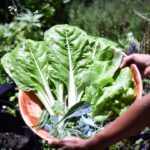How to Adopt a Sustainable Lifestyle with Superfoods
Introduction
Embracing a sustainable lifestyle doesn’t just benefit the environment; it can also boost your health and overall well-being. One of the easiest and most delicious ways to live more eco-consciously is by incorporating superfoods into your diet. These nutrient-rich powerhouses not only offer exceptional health benefits but are also often grown in eco-friendly ways that support local communities and help preserve our planet. In this blog, we’ll explore how you can integrate these wonders of nature into your daily life, contributing to both your health and the health of our Earth.
Benefits of Superfoods in a Sustainable Lifestyle
 Image courtesy: Pexels
Image courtesy: Pexels
Nutritional benefits of superfoods
Superfoods are not just trendy; they pack a massive punch of vitamins, minerals, and antioxidants with minimal caloric intake. Integrating superfoods into your meals can boost your immune system, reduce inflammation, and promote overall health. For instance, foods like blueberries are renowned for their high levels of vitamin C and vitamin K, along with fibers that support digestive health. Similarly, the antioxidants present in acai berries can help combat oxidative stress in the body, potentially lowering the risk of chronic diseases such as heart disease and cancer. Embracing these nutrient-dense foods can lead to sustained health improvements and a more vibrant lifestyle without the need for excessive supplements.
Environmental benefits of incorporating superfoods into your diet
Opting for superfoods also has substantial environmental benefits, which is crucial for promoting a sustainable lifestyle. Many superfoods like lentils and hemp seeds require less land and water to grow compared to other crops and animal products. This means that they have a lower carbon footprint and less impact on the environment. Additionally, by choosing organic and locally sourced superfoods, you contribute to reducing the usage of harmful pesticides and fertilizers and support local economies. Ultimately, incorporating superfoods into your diet isn’t just a health choice—it’s a vote for a healthier planet.
Most Eco-Friendly Superfoods to Include in Your Diet
Chia seeds
Chia seeds are more than just a health craze; they’re a powerhouse nutrient source and an environmental superstar. These tiny seeds are loaded with omega-3 fatty acids, which are essential for brain health. They are also rich in dietary fibers and can help regulate blood sugar levels. Environmentally, chia seeds are a win-win as they grow abundantly in dry climates with minimal water. Moreover, chia plants naturally repel pests, thus reducing the need for chemical pesticides. Adding chia seeds to your diet through smoothies, yogurt, or baked goods, can help enhance your nutrient intake while ensuring your food choices support sustainable farming practices.
Quinoa
Quinoa has been heralded as a ‘super grain’ although it’s technically a seed, and for good reasons. Nutritionally, quinoa provides a complete protein source, which is rare in plant-based foods. It’s also packed with iron, B-vitamins, magnesium, phosphorus, potassium, calcium, vitamin E, and fiber. When it comes to sustainability, quinoa requires very little water to produce compared to traditional grains like wheat and rice. It’s also a crop that can thrive in poor soil conditions, increasing its viability as a sustainable food source. Incorporating quinoa into your meals can support a move towards an eco-friendlier diet while diversifying your dietary palette.
Kale
Kale has become synonymous with healthy eating for very good reasons. It’s full of vitamins A, K, and C, along with numerous antioxidants and minerals. This leafy green is also incredibly resilient and can grow in cooler temperatures, making it an ideal crop for various environments. Additionally, kale has a relatively low water footprint and can be cultivated repeatedly on the same land. Its adaptability reduces the need for agricultural expansion into wild areas, helping to preserve natural habitats. Including kale in soups, smoothies, salads, or even as chips can enhance your meals with nutrients while supporting eco-friendly agricultural practices.
How to Source Superfoods Sustainably
Adopting a superfood-rich diet doesn’t just have to be good for you—it can also positively impact the environment. The key is to source your superfoods sustainably. Here’s how you can do that:
Buying local and organic
Choosing to buy locally grown organic superfoods can significantly reduce your carbon footprint. When you buy local, you help eliminate the need for long-distance food transportation which contributes to a major part of global carbon emissions. Furthermore, organic farming practices are designed to reduce pollution, conserve water, reduce soil erosion, increase soil fertility, and use less energy. Farming without pesticides is also better for nearby birds and animals as well as people who live close to farms. Next time you shop, look for superfoods like blueberries, kale, and quinoa that are marked as organic and locally sourced.
Growing your own superfoods
Another effective approach to sustainable superfood consumption is growing them yourself. This not only ensures you are eating fresh, pesticide-free produce but also cuts down on the environmental costs associated with packaging and transporting food items. Many superfoods thrive in home gardens including spinach, beans, and berries. Starting a garden might sound intimidating, but you can begin small with just a few plants, and as you gain confidence, your garden can expand. Not to mention, gardening is a relaxing activity that can connect you to nature.
Sustainable Eating Habits Beyond Superfoods
Sustainable eating involves more than just eating superfoods. It encompasses all aspects of your diet and lifestyle. Here are additional ways to make your eating habits more eco-friendly:
Reduce food waste
Food waste is a major issue globally, contributing to methane emissions when organic material breaks down in landfills. To reduce food waste, plan your meals and know exactly what you need before going shopping to avoid impulse buys that may not be consumed. Store foods correctly to extend their freshness and be creative with leftovers instead of throwing them out. For instance, wilted vegetables can make a great stir-fry or soup, and overripe fruits are perfect for baking or smoothies.
Use reusable containers and bags for shopping
Incorporating reusable containers and bags into your shopping routine can significantly cut down on plastic waste. Many stores offer a discount for bringing your own bags, and markets often sell produce without packaging if you bring your own containers. Besides their environmental benefits, reusable items are often more durable and can be more cost-effective over time. Always keep a set of containers and bags in your car or near your door so you’ll never forget them when you head out to shop.
By integrating these sustainable practices into your lifestyle, you contribute to a healthier planet and a more sustainable future while enjoying the numerous health benefits of superfoods and mindful eating.
Recipes Incorporating Superfoods for a Sustainable Lifestyle
Chia seed pudding
Chia seed pudding is a delightful treat that packs a nutritional punch, ideal for anyone looking to adopt a sustainable lifestyle. To prepare, mix one-quarter cup of chia seeds with one cup of your preferred plant-based milk, such as almond or coconut milk. Add a tablespoon of maple syrup or honey for a touch of natural sweetness. Stir the mixture well and let it sit in the refrigerator overnight. The chia seeds will absorb the liquid, transforming it into a pudding-like consistency. Feel free to top it off with fresh fruits, nuts, and a sprinkle of cinnamon in the morning for a delicious and eco-friendly breakfast.
Quinoa salad
Quinoa, a remarkable superfood, is known not only for its nutritional benefits but also for its versatility. For a refreshing quinoa salad, start by cooking one cup of quinoa as per the package instructions and let it cool. In a large bowl, combine the cooked quinoa with chopped vegetables like cucumbers, cherry tomatoes, and red bell peppers. For added texture and flavor, throw in some diced avocados and a handful of pumpkin seeds. Dress the salad with lemon juice, olive oil, salt, and pepper. This salad is not only fulfilling but also aligns with a sustainable lifestyle by being plant-based and nutrient-rich.
Kale and avocado smoothie
Smoothies are a fantastic way to integrate several superfoods into a single meal, and a kale and avocado smoothie is no exception. In a blender, combine a cup of chopped kale leaves, one ripe avocado, a sliced banana for natural sweetness, and a cup of almond milk for a creamy base. You can also add a tablespoon of flax seeds to boost the fiber content. Blend until smooth. This green smoothie is energizing, packed with essential nutrients, and perfect for an on-the-go breakfast or a quick nutritious snack.
Tips for Maintaining a Sustainable Lifestyle with Superfoods

Meal planning
Integrating superfoods into your diet can be effortless with a bit of planning. Start by making a weekly meal plan that incorporates a variety of superfoods across all meals. Plan to use ingredients like lentils, beans, nuts, seeds, and a wide range of fruits and vegetables. These foods not only offer numerous health benefits but are also better for the environment than many conventional food choices. By planning your meals, you can minimize waste, save money, and ensure that you are eating a diverse and nutritious diet every day.
Supporting sustainable food brands
Choosing the right brands is crucial when adopting a sustainable lifestyle. Opt for brands that are committed to sustainable agriculture practices. Look for certifications like organic, non-GMO, fair-trade, and locally sourced when you shop. These labels often indicate that the products have been grown without harmful pesticides and chemicals, ensuring that your food choices are not only healthy but also kind to the planet. Supporting these brands helps promote a market for sustainable products, encouraging more companies to adopt responsible practices.
Conclusion
Adopting a sustainable lifestyle by incorporating superfoods isn’t just a trend; it’s a practical approach to living that benefits your health and the planet. By choosing eco-friendly superfoods, you not only nourish your body with high-quality nutrients but also contribute to global environmental efforts. As you’ve learned, it’s as simple as being mindful about what you eat and how it’s sourced. Let’s embrace these hearty, healthy superfoods and make a positive impact on our well-being and the Earth’s future. Remember, every small choice can lead to significant changes!










